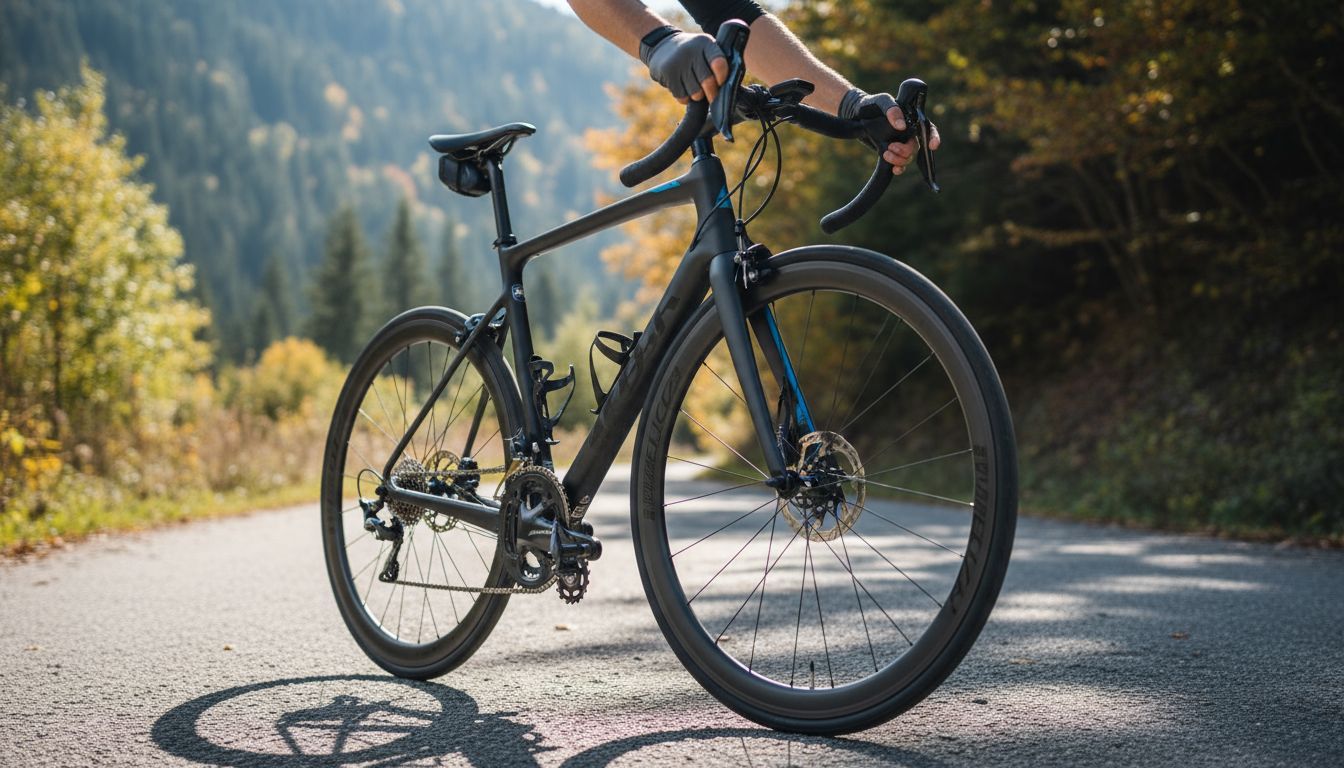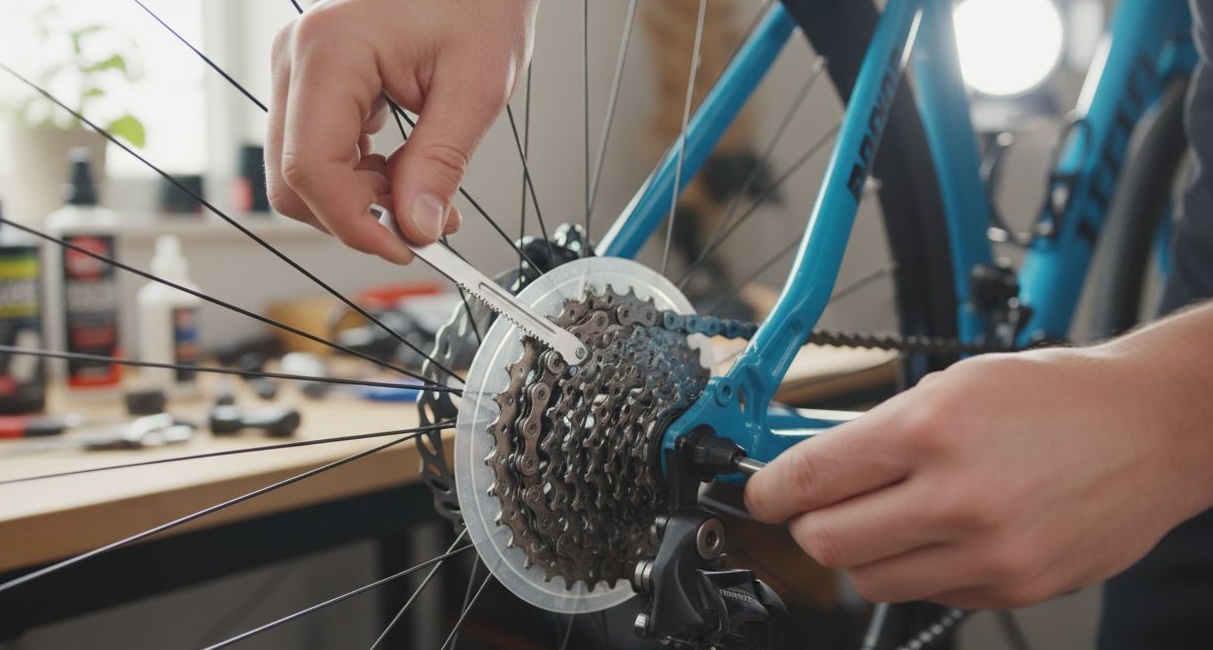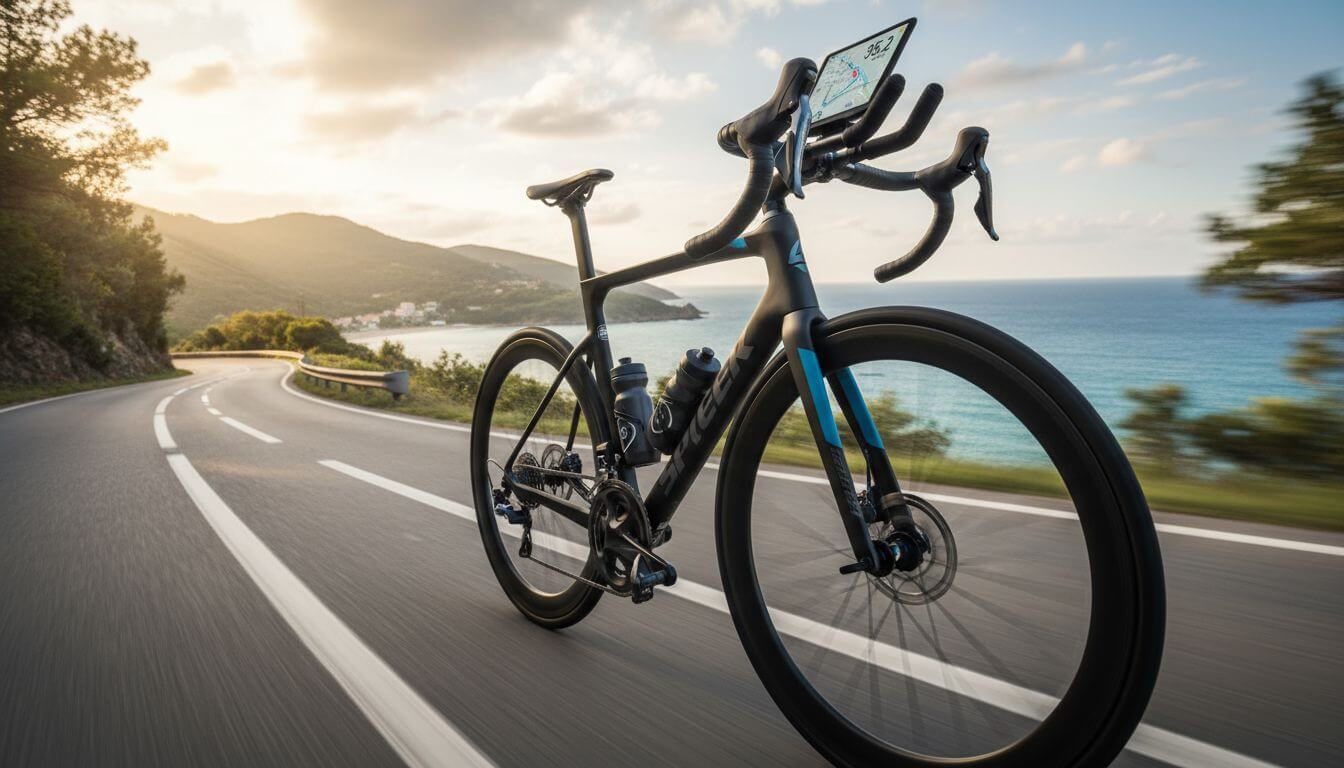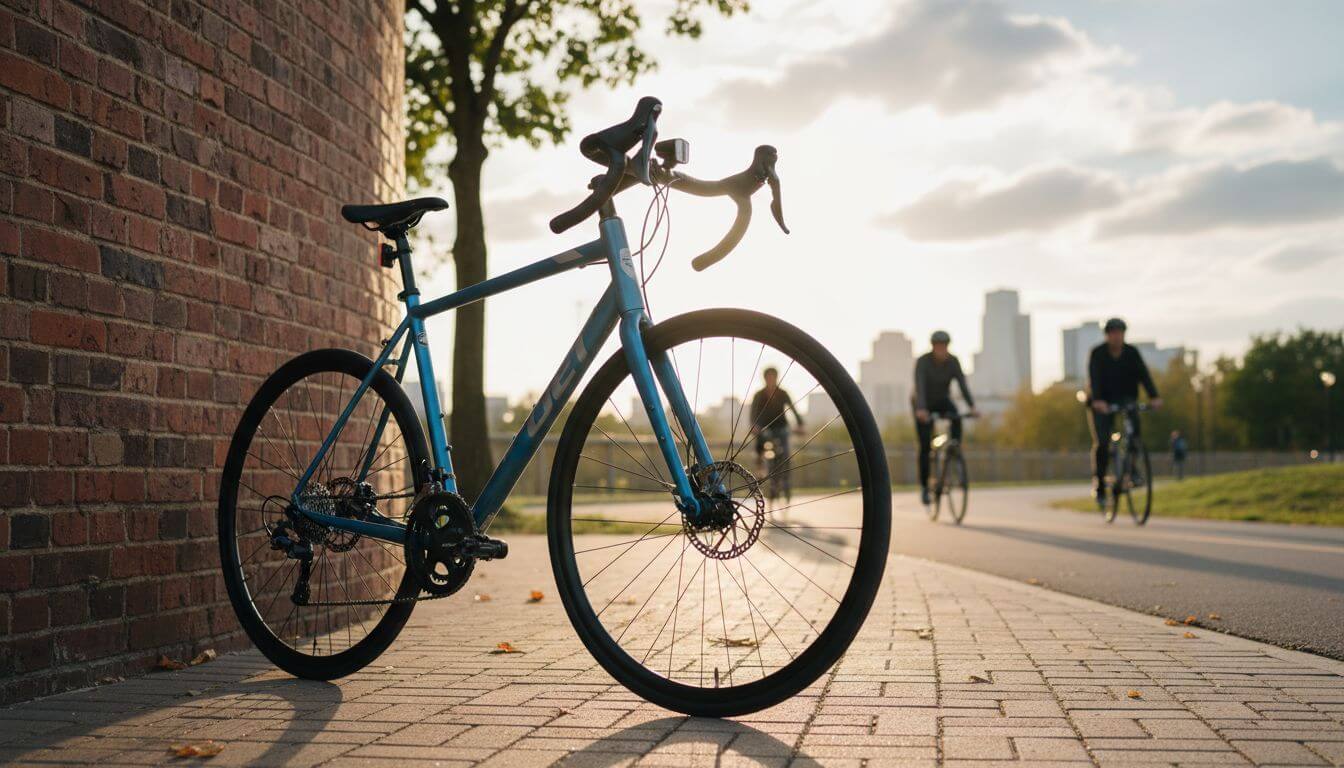
Introduction: Mastering the Art of Smooth Shifting
Gear shifting on a bicycle, while seemingly simple, is a crucial skill that can significantly impact your riding efficiency, enjoyment, and even the longevity of your bike components. Many cyclists, from beginners to experienced riders, still make common mistakes that hinder their performance and potentially damage their drivetrain. This article delves into the top 10 gear shifting errors cyclists commit, providing practical solutions and insights to elevate your shifting technique and ensure a smoother, more efficient ride. Proper gear shifting not only makes cycling easier and more enjoyable, but also prolongs the life of your chain, cassette, and derailleurs, saving you money in the long run.
Mistake #1: Shifting Under Heavy Load
One of the most damaging shifting mistakes is attempting to change gears while applying maximum power to the pedals. This puts immense stress on the chain and cassette, leading to skipped gears, chain wear, and potential derailleur damage. The chain struggles to move smoothly between cogs under such pressure, resulting in a jarring and inefficient shift.
The Solution: Ease Up Before Shifting
The key to avoiding this issue is to briefly ease up on the pedals just before initiating a gear change. Reduce your pedaling force slightly, allowing the chain to transition smoothly and quietly onto the next cog. This technique, often referred to as "soft pedaling" during shifts, minimizes stress on the drivetrain and ensures a clean, crisp gear change. Anticipating hills or changes in terrain and shifting before the load becomes too great is also crucial.


Mistake #2: Cross-Chaining
Cross-chaining refers to using the extreme gear combinations – the large chainring with the largest cog on the cassette, or the small chainring with the smallest cog on the cassette. These combinations create a significant angle in the chain, increasing friction, wear, and the risk of chain derailment. Cross-chaining is easily identifiable by the noise emanating from the drivetrain and the feeling of increased resistance.
The Solution: Avoid Extreme Combinations
Be mindful of your gear selection and avoid using the extreme ends of the gear range simultaneously. As a general rule, if you're in the largest chainring, avoid using the largest two or three cogs on the cassette. Conversely, if you're in the smallest chainring, avoid using the smallest two or three cogs. Aim to keep the chain running as straight as possible. Shifting to the other chainring and compensating on the cassette is usually the best solution.
Mistake #3: Neglecting Cable Maintenance
Even the best derailleurs won't function properly if the shift cables are corroded, kinked, or heavily contaminated. Dirty or damaged cables increase friction, making shifting sluggish, imprecise, and difficult. This can lead to missed shifts, ghost shifting (where the chain jumps between gears without input), and general frustration.
The Solution: Regular Cleaning and Lubrication
Regularly clean and lubricate your shift cables to ensure smooth operation. Use a dedicated cable lubricant or a light oil. Periodically inspect the cables for signs of fraying or corrosion. If the cables are heavily damaged, replace them immediately. Consider using cables with sealed housings to minimize contamination and extend their lifespan. Replacing cables annually or bi-annually is a good practice, especially for riders who frequently ride in wet or dirty conditions.
Mistake #4: Over-Shifting or Under-Shifting
Over-shifting occurs when you shift past the desired gear, while under-shifting happens when you don't shift far enough to fully engage the next gear. Both scenarios result in noisy, inefficient shifting and can damage the drivetrain over time. These mistakes often stem from a lack of precision and feel for the shifter.
The Solution: Practice and Fine-Tune
Practice shifting in a controlled environment to develop a feel for the shifter and the amount of lever travel required for each gear change. Ensure your derailleurs are properly adjusted so that each click of the shifter corresponds to a clean, precise shift onto the next cog. Fine-tune the cable tension using the barrel adjusters on the derailleurs or shifters. Micro-adjustments can make a significant difference in shifting performance. Seek professional help if you're unsure about derailleur adjustment.
Mistake #5: Shifting Too Late
Waiting until you're already struggling up a hill before shifting to an easier gear is a common mistake. This puts undue stress on the drivetrain and makes it more difficult to execute a smooth shift. It also depletes your momentum and makes the climb more challenging.
The Solution: Anticipate Terrain Changes
Anticipate changes in terrain and shift proactively before the gradient becomes too steep. This allows you to maintain a consistent cadence and avoid straining your muscles. Observing the road ahead and planning your gear changes accordingly is a key skill for efficient cycling. Learning to read the terrain and anticipate the need for a different gear is crucial for smooth climbing.
Mistake #6: Ignoring Chain Wear
A worn chain will not mesh properly with the cogs on the cassette and chainrings, leading to poor shifting performance and accelerated wear on the entire drivetrain. Riding with a worn chain can also cause the chain to skip under load, which is not only inefficient but also potentially dangerous.
The Solution: Regular Chain Checks and Replacement
Regularly check your chain for wear using a chain wear indicator tool. Replace the chain when it reaches the recommended wear limit. Replacing the chain proactively prevents excessive wear on the cassette and chainrings, saving you money in the long run. A new chain will significantly improve shifting performance and reduce drivetrain noise. Replacing the chain along with the cassette at regular intervals prevents issues.
Mistake #7: Using the Wrong Chain Lube
Using the wrong type of chain lubricant can negatively impact shifting performance. Some lubricants are too thick and attract dirt, creating a grinding paste that accelerates wear. Others are too thin and don't provide adequate lubrication, leading to increased friction and noise. A dry chain leads to poor shifting performance.
The Solution: Choose the Right Lube for the Conditions
Choose a chain lubricant that is appropriate for the riding conditions. Use a dry lube in dry, dusty conditions and a wet lube in wet, muddy conditions. Apply the lubricant sparingly and wipe off any excess. A properly lubricated chain will shift smoothly and quietly. Avoid over-lubricating the chain, as this can attract dirt and grime.
Mistake #8: Neglecting Derailleur Adjustment
Misaligned or poorly adjusted derailleurs are a common cause of shifting problems. If the derailleurs are not properly aligned with the cassette and chainrings, the chain will struggle to move smoothly between gears, resulting in missed shifts, noise, and inefficient performance. Even a slight misalignment can significantly impact shifting quality.
The Solution: Regular Derailleur Adjustment
Regularly check the alignment of your derailleurs and adjust them as needed. Use the limit screws to prevent the chain from falling off the cassette or chainrings. Adjust the cable tension to ensure precise shifting. Consult a professional mechanic if you're unsure about derailleur adjustment. Correct derailleur adjustment ensures proper shifting.
Mistake #9: Shifting While Standing
Shifting gears while standing and applying significant power can be particularly harsh on the drivetrain. The sudden increase in torque can cause the chain to skip or even break, especially if the gears are not properly aligned or the chain is worn. The increased force can also put excessive strain on the derailleurs.
The Solution: Shift Before Standing
Whenever possible, shift to the appropriate gear before standing up to pedal. This allows for a smoother, more controlled transition and minimizes stress on the drivetrain. If you need to shift while standing, try to ease up on the pedals momentarily to reduce the load. Anticipating the need to stand is crucial.
Mistake #10: Ignoring the Sounds of Your Bike
Your bicycle often provides audible cues about its condition. Ignoring unusual noises, such as clicking, grinding, or skipping sounds, can allow minor problems to escalate into major issues. These sounds often indicate problems with shifting or drivetrain components.
The Solution: Listen and Investigate
Pay attention to the sounds your bike makes while riding. If you hear any unusual noises, investigate the cause and address it promptly. Ignoring these sounds can lead to more serious damage and costly repairs. Regular listening helps in identifying problems early on. A well-maintained bike should shift smoothly and quietly.
Conclusion: Shift Smarter, Ride Smoother
By understanding and avoiding these common gear shifting mistakes, you can significantly improve your cycling experience. Mastering proper shifting techniques will not only make your rides smoother and more enjoyable but also extend the lifespan of your drivetrain components, saving you money and frustration in the long run. Remember to practice these tips, pay attention to your bike, and seek professional help when needed. Happy shifting!


